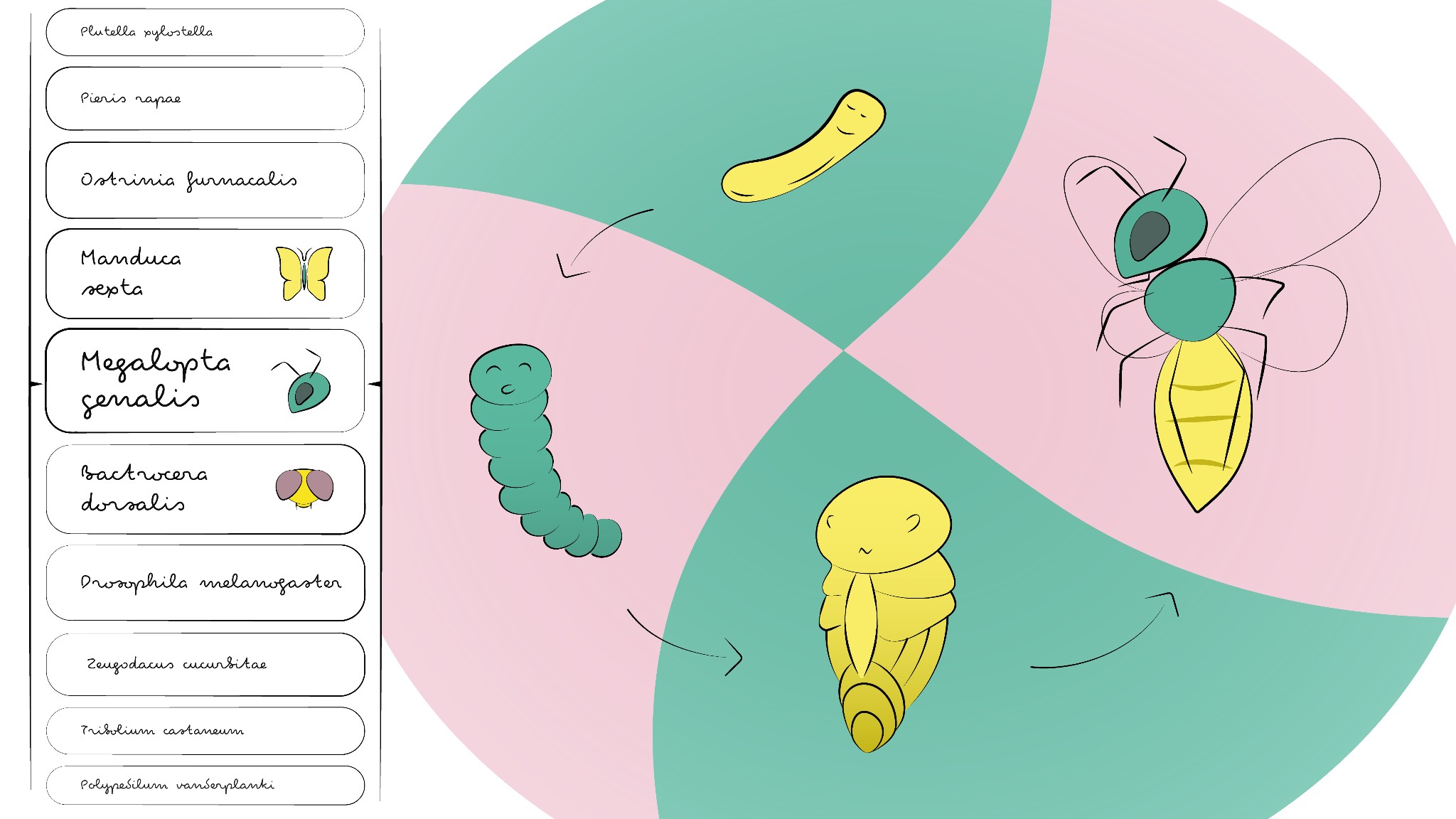Skoltech researchers have shown genes involved in embryonic development to be at work in pupation — the drastic transformation that butterflies and some other insects undergo as their larvae mature. The discovery furthers our understanding of the pupal stage, whose evolutionary origins and genetic mechanisms are not entirely clear to this day. The study came out in Scientific Reports.
“Certain insects, including beetles, flies, bees, and moths, go through a radical metamorphosis during what’s known as the pupal stage in their development, losing all larval organs and acquiring the new organs of an adult insect,” the study’s lead author, Skoltech PhD student Alexandra Ozerova, commented. “We investigated which genes were active — and which inactive — in the pupae of nine insect species, and showed that their pattern is strongly reminiscent of what happens in embryos.”
Embryogenesis involves building new organs from scratch. In the insects studied, the embryonic gene program initially kicks in at the egg stage and then is suppressed in larvae. Apparently, the researchers suggest, this program is then relaunched at the pupal stage, with more or less the same pattern of genes activated and inhibited.
“There are two leading hypotheses to explain this,” principal investigator and the head of Skoltech Bio, Professor Mikhail Gelfand, said. “One possibility is that embryogenesis in these insects only really ends with the end of the pupal stage, which would make the larva some sort of an intermediate ‘crawling embryo’ stage. Alternatively, pupation could constitute a very elaborate instance of molting. So far there is no definitive answer, but we will continue our research to find out.”
In its work, the team proceeds by applying bioinformatic analysis to previously published transcriptomic data. These are reports of genetic sequencing that targets not the genes in the DNA, but rather their RNA copies used in actually implementing the biological instructions encoded in those genes. This allows scientists to account for gene expression: How many RNA copies of the gene are being made gives you an idea of whether that particular gene is active or inhibited at a given stage in the insect’s life cycle.
According to the researchers, they will now seek new, more specific pupal gene expression patterns by comparing the data between different species to shed more light on how this bizarre stage in insect development came about in the course of evolution, what purpose it serves, and how it works.
Contact information:
Skoltech Communications
+7 (495) 280 14 81

